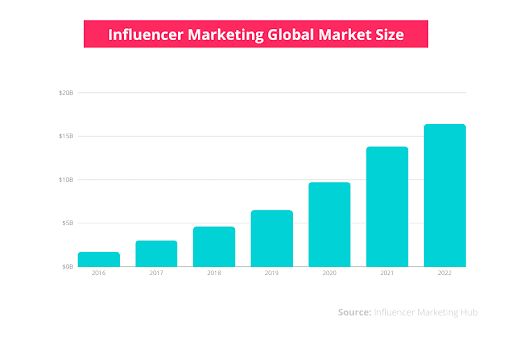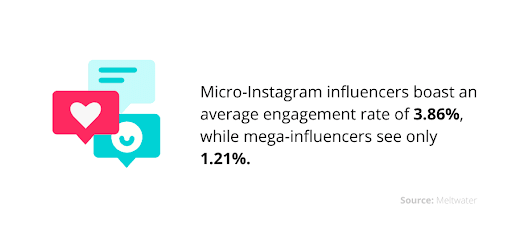August 21, 2025
6 min read
Data-Driven Influencer Marketing: Leveraging Analytics to Find the Right Influencers and Measure Performance Metrics
Influencer marketing has become one of the most effective ways for brands to reach their audiences on social media. By partnering with influencers, brands can tap into their loyal following and leverage their influence to promote products and services.

However, with so many influencers and social media platforms available, it can be challenging for brands to find the right influencers and measure the success of their campaigns. This is where data-driven influencer marketing strategy comes in – leveraging analytics tools to help brands identify the right influencers and measure the performance metrics that matter.
This is a guest post from Ania Ledwoń-Blacha, Co-founder and Creative Director at More Bananas agency and co-founder and main organizer of CRASH Mondays. Product marketing manager at startup alloweat. Supervisor of the Brand Manager course at IMOK.
Data-driven influencer marketing is the process of using data to identify the most relevant influencers for a brand's campaign. By analyzing data such as engagement rates, audience demographics or content themes, brands can determine which influencers are most likely to resonate with their target audience.
The Power of Influencer Marketing
Influencer marketing has been around for a long time, but it has exploded in recent years with the rise of social media. Social media platforms like Instagram, TikTok or YouTube have given rise to thousands of influencers with massive followings.

They built a base of loyal followers by creating engaging content that resonates with their audience. Brands can tap into this loyal base by partnering with influencers to promote their products and services.
However, not all influencers are the same. Some have lots of followers, while others have smaller but more engaged audiences. Micro-influencers, for example, have fewer followers but often enjoy a more engaged audience that is more likely to take action. To be effective, brands need to find the right influencers that align with their brand and can help them achieve their influencer marketing campaign goals.

The Rise of Micro-Influencers
Micro-influencers are social media influencers with a smaller following, typically between 1,000 to 100,000 followers. They have a highly engaged audience and can be more cost-effective for brands compared to partnering with macro-influencers or celebrities. By leveraging analytics tools, brands can identify micro-influencers who are the right fit for their campaigns and achieve the desired results.

Finding the right influencers can be challenging, but analytics tools can make the process much easier. By using influencer marketing analytics tools, brands can analyze influencers’ audience demographics, engagement rate, and other key metrics to determine if they are the right fit for their campaign and marketing influencer strategy.
One of the most popular influencer marketing analytics tools is Instagram Insights or TikTok Insights. These tools provide brands with valuable insights into the influencer's audience demographics, including age, gender, location or interests. Brands can use this information to ensure that the influencer's audience is interested in their product or service.
In addition to Instagram Insights or TikTok Insights, there are many other influencer marketing analytics tools available that can help brands find the right influencers. Some of these tools include HypeAuditor, Influencer.co or Klear. Right influencer analytics tools provide brands with valuable insights into an influencer's engagement rate, reach and other key metrics. They help brands identify the right influencers to collaborate with based on relevant metrics and ensure they are not partnering with fake influencers.
Social media analytics tools such as Sprout Social, Falcon.io or Agorapulse or alternatives help brands track their social media campaigns across various social media channels. These tools provide insights into audience demographics, engagement rate, and other key metrics that help brands measure the success of their influencer marketing campaigns.
Measuring the Success of Influencer Marketing Campaigns
Once brands find the right influencers, they need to measure the success of their campaigns. This is where analytics tools prove very important. By using the right influencer marketing analytics tools, brands can measure the performance metrics that matter and determine if their campaign was successful.
Some of the key metrics that brands should measure include engagement rate, profile visits, audience size and followers. Engagement rate measures the number of likes, comments, and shares received by influencer's posts. Profile visits measure the number of times an influencer's profile is viewed. Audience size measures the total number of followers an influencer has, and followers measure the number of new followers gained during the campaign.
In addition to the key metrics, there are many others that brands can measure to determine the success of their influencer marketing campaigns. For example, brands can measure the number of user-generated content (UGC) created during the campaign, the number of audience members who were interested in the product or service, and the number of influencer’s posts that were shared on social media channels.
Ensuring Brand Safety in Influencer Marketing Strategy
Brand safety is a top concern for brands when partnering with influencers. By using the right influencer marketing analytics tools, brands can ensure they are partnering with the right influencers who align with their brand values and messaging. Brands can also track the performance of their influencer’s posts and measure the impact on their brand reputation. But the most important thing is…
Avoiding Fake Influencers
One of the biggest challenges in influencer marketing is avoiding fake influencers. Fake influencers are individuals who purchased fake followers and engagement to appear more influential than they really are. These influencers can be detrimental to a brand's campaign, as they do not have a real audience that can be converted into customers.
To avoid fake influencers, brands should use influencer marketing analytics tools to verify the audience and engagement of an influencer. These tools can identify fake followers and provide brands with an accurate picture of an influencer's true influence.
Conclusion
Data-driven influencer marketing is essential for brands looking to succeed in the world of social media marketing. By using the right analytics tools, brands can find the right influencers and measure the performance metrics that matter. With so many brands and influencers on social media, it is critical to use these tools to ensure that a brand's message reaches the right audience and that the campaign is successful. In today's world, influencer marketing is no longer optional, but it’s a necessity for brands looking to stay ahead of the competition and reach their target audience.
